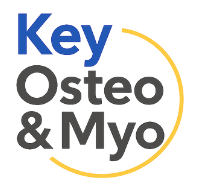Understanding Craniosacral Therapy
Origins and principles of craniosacral work
The craniosacral system and its role in the body
If you suspect your baby may be struggling with tongue-tie or feeding discomfort, our osteopaths at Key Osteopaths are here to help. With specialist experience in assessing and treating babies across West Byfleet, Woking, Weybridge, Guildford, Ripley, Cobham, and nearby Surrey areas, we take the time to understand your baby’s individual needs and provide gentle, evidence-based care that supports comfortable feeding, healthy development, and calmer days ahead.Anna, Principal Osteopath at Key Osteopaths
How Craniosacral Therapy Works

Subtle movement and fluid dynamics
Nervous system regulation and parasympathetic balance
Conditions Craniosacral Therapy May Help With

Headaches, jaw tension, and postural strain
Infant feeding, sleep, and settling issues
Stress-related pain and fatigue

MEET THE
team
I specifically booked in with Anna as she came highly recommended by a friend. I have been visiting physios, chiropractors and osteopaths for years with no real success. The problem… read more I had wasn’t complex, but I also suffer with a rare syndrome which means fixing that simple problem made it slightly complex!! I was pleasantly surprised when Anna was aware of my syndrome and knew all about it! No one else I had been to knew anything about it! The treatment she gave me was so relevant and was in line with my syndrome, which meant I saw immediate results when I stuck to the exercises. I genuinely feel like Anna really listened to what I had to say when so many others hadn’t. She is so knowledgeable, approachable, helpful and thoughtful I wouldn’t go anywhere else and would 100% recommend visiting. On a side note, her studio is so spacious and clean, it always is a pleasure to attend.
Anna is absolutely incredible and I cannot recommend her high enough! I have been seeing Anna for 2 years and she has changed my life. I had spent… read more the previous 5 years to this with serious back pain due to disc degeneration. During this time I had been given both steroid injections and a nerve denervation to ease the pain (along with many painkillers). Since seeing Anna I have not needed anything. She works her magic and then gives you simple exercises until your next appointment. She has also advised on my posture, driving and sleep position and everything she has advised has worked. I don’t need to see her so regularly anymore, but she is now helping my daughter who suffers ankle problems. A very talented lady, who is also excellent with children. Go see her !
What to Expect During a Session at Key Osteopaths

Assessment and gentle hands-on techniques
What patients typically feel during treatment
Integrating craniosacral therapy into your care plan
Safety, Evidence, and Professional Standards

When craniosacral therapy is appropriate
Red flags and referral pathways
Anna is absolutely incredible and I cannot recommend her high enough! I have been seeing Anna for 2 years and she has changed my life. I had spent… read more the previous 5 years to this with serious back pain due to disc degeneration. During this time I had been given both steroid injections and a nerve denervation to ease the pain (along with many painkillers). Since seeing Anna I have not needed anything. She works her magic and then gives you simple exercises until your next appointment. She has also advised on my posture, driving and sleep position and everything she has advised has worked. I don’t need to see her so regularly anymore, but she is now helping my daughter who suffers ankle problems. A very talented lady, who is also excellent with children. Go see her !
I can not recommend Anna more…..she has totally helped me sort my lower back after a slipped disc. I now see her regularly just to prevent any further issues with… read more my back. She has worked magic! I have recommended her to many friends and family who have equally been really pleased with her.
Our Osteopathic Approach in Surrey

Blending cranial, structural, and visceral techniques
Collaborative care and patient-centred outcomes
Book an Appointment at Key Osteopaths

Our Surrey clinics and local reach
Your first visit and tailored care
I cannot recommend Anna highly enough! Against all odds, when I was told I would need spinal surgery to just be able to walk without any pain, to now training… read more 5 times a week and being able to run again, I have so much to thank Anna for!
Anna is a delightful and competent professional who gives first rate, comprehensive treatment at every visit. I went in as a “wonky donkey” and walked out feeling six foot… read more tall with a normal gait in my first visit! I have given her practice details out to many of my friends. Also, her new treatment rooms are a relaxing retreat from the hustle and bustle – an excellent place for monthly maintenance.
Anna came highly recommended and I have not been disappointed. My back and hip problem have been resolved in a mere two very good sessions. Anna knows what she’s… read more doing and has a very good way of comforting and putting you at ease. Will be returning for regular sessions. Highly recommend!

